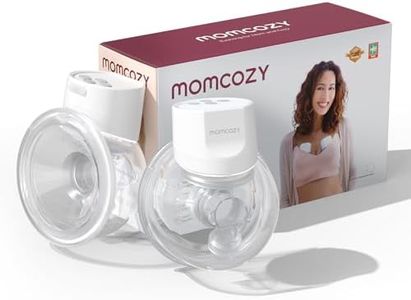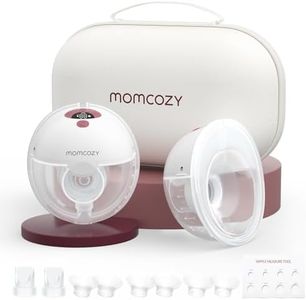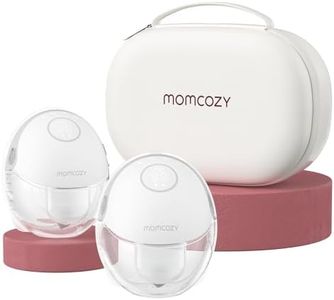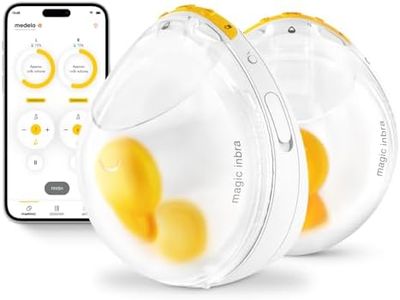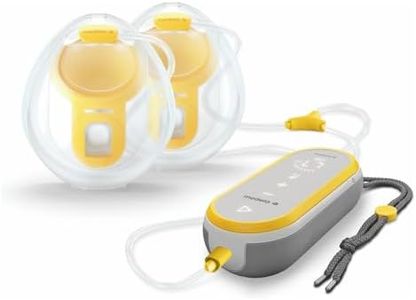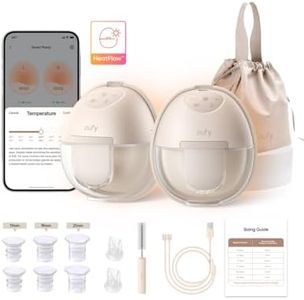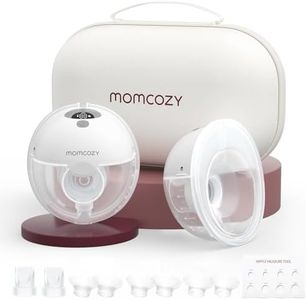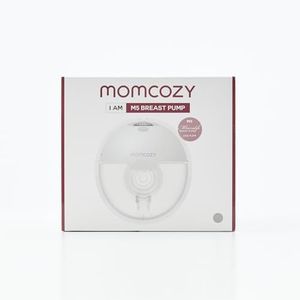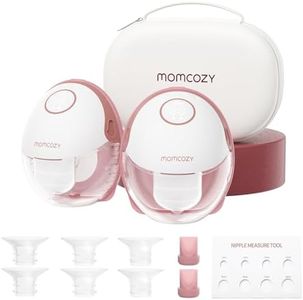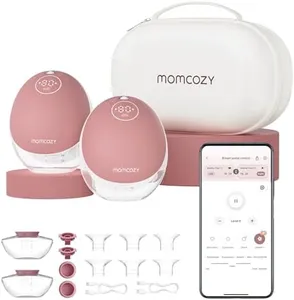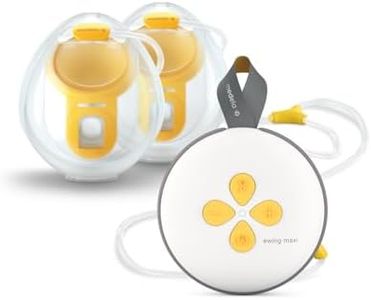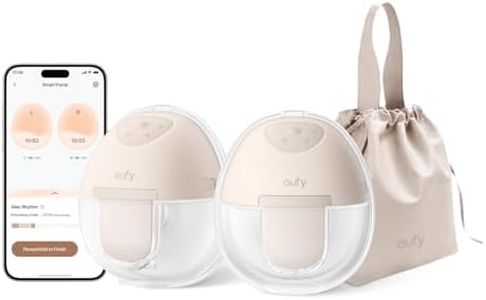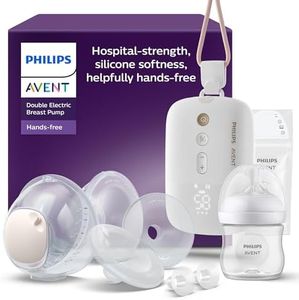We Use CookiesWe use cookies to enhance the security, performance,
functionality and for analytical and promotional activities. By continuing to browse this site you
are agreeing to our privacy policy
10 Best Hands Free Breast Pump
From leading brands and best sellers available on the web.Buying Guide for the Best Hands Free Breast Pump
Choosing the right hands-free breast pump can make a significant difference in your breastfeeding journey. A hands-free breast pump allows you to pump milk without using your hands, giving you the freedom to multitask or simply relax while pumping. When selecting a hands-free breast pump, it's important to consider several key specifications to ensure you find the best fit for your needs. Understanding these specifications will help you make an informed decision and choose a pump that suits your lifestyle and preferences.Suction PowerSuction power refers to the strength of the pump's ability to extract milk. This is important because effective suction can help you express milk more efficiently and comfortably. Suction power is usually measured in mmHg (millimeters of mercury). Pumps with higher suction power can extract milk faster, but they may also be less comfortable for some users. If you have sensitive breasts, you might prefer a pump with adjustable suction levels so you can find a comfortable setting. For those who need to pump quickly, a higher suction power might be more suitable.
PortabilityPortability is the ease with which you can carry and use the pump on the go. This is crucial for mothers who need to pump while traveling, at work, or away from home. Portable pumps are typically lightweight, compact, and may come with a rechargeable battery. If you plan to use the pump primarily at home, portability might be less of a concern. However, if you need to pump in various locations, look for a pump that is easy to transport and has a long battery life.
Noise LevelNoise level refers to how loud the pump is when in use. This is important if you need to pump discreetly, such as in a shared office or while your baby is sleeping. Pumps with lower noise levels are generally more discreet and less likely to disturb others. If you need to pump in quiet environments, look for a pump that is specifically designed to operate quietly. On the other hand, if noise is not a concern for you, this specification might be less critical.
ComfortComfort is how the pump feels when in use, which can affect your overall pumping experience. Comfortable pumps typically have soft, cushioned flanges and adjustable suction settings. Comfort is important because it can impact how long and how often you are willing to pump. If you experience discomfort while pumping, you may be less likely to use the pump regularly. Look for a pump with features that enhance comfort, such as customizable flange sizes and gentle suction modes.
Ease of CleaningEase of cleaning refers to how simple it is to clean the pump parts after use. This is important for maintaining hygiene and ensuring the pump remains in good working condition. Pumps with fewer parts or parts that are dishwasher-safe are generally easier to clean. If you have limited time for cleaning, look for a pump with minimal components and straightforward assembly. If you don't mind spending extra time on cleaning, this specification might be less of a priority.
Battery LifeBattery life indicates how long the pump can operate on a single charge. This is important for mothers who need to pump away from a power source. Longer battery life means you can pump multiple times without needing to recharge. If you plan to use the pump primarily at home, battery life might be less important. However, if you need to pump while traveling or at work, look for a pump with a long-lasting battery or the option to use disposable batteries.
PricePrice is the cost of the pump, which can vary widely depending on the features and brand. While price is not always an indicator of quality, more expensive pumps often come with additional features and better build quality. Consider what features are most important to you and how often you will use the pump. If you plan to pump frequently, it might be worth investing in a higher-end model. If you only need to pump occasionally, a more affordable option might suffice.
